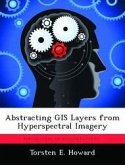The purpose of this research was to improve on the outlier detection methods used in hyperspectral imagery analysis. An algorithm was developed based on Principal Component Analysis (PCA), a classical multivariate technique usually used for data reduction. Using PCA, a score is computed and a test statistic is then used to make outlier declarations. First, four separate PCA test statistics were compared in the algorithm. It was found that Mahalanobis distance performed the best. This test statistic was then compared using the entire data set and a clustered data set. Since it has been shown in the literature that even one outlier can distort the covariance matrix, an iterative approach to the clustered based algorithm was developed. After each iteration, if an outlier(s) is identified, the observation(s) is removed and the algorithm is reapplied. Once no new outliers are identified or one of the stopping conditions is met, the algorithm is reapplied a final time with the new covariance matrix applied to the original data set. Experiments were designed and analyzed using analysis of variance to identify the significant factors and optimal settings to maximize each algorithm's performance.
Bitte wählen Sie Ihr Anliegen aus.
Rechnungen
Retourenschein anfordern
Bestellstatus
Storno








